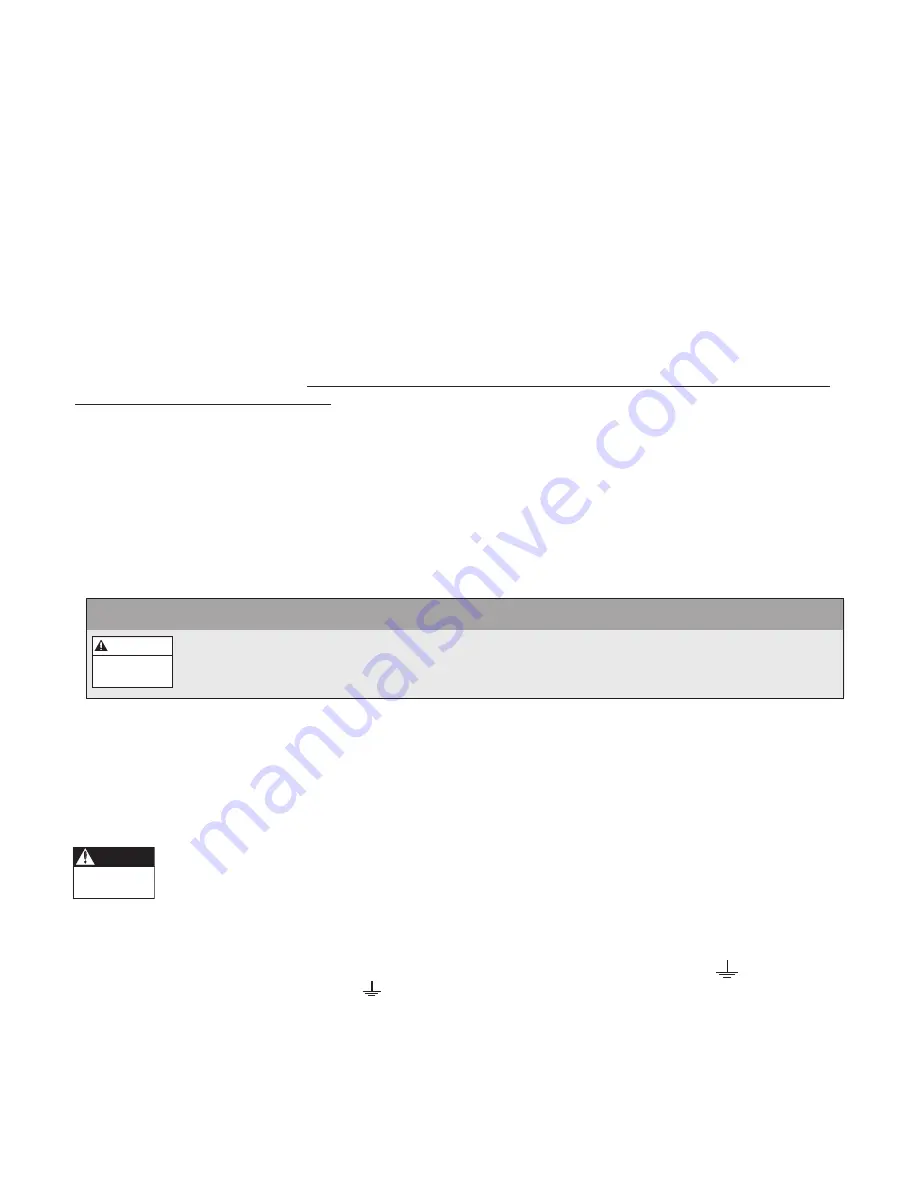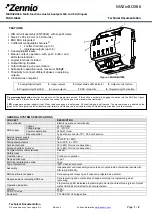
Page 14
WARNING
Hazardous
voltage
Section 6
(continued)
Input Power and Line Transformer Requirements
The line input voltage and transformer power must meet certain phase and balance requirements. If you or
your installing electrical contractor is in doubt of the requirements, the following provide guidelines for
installation. When in doubt contact the local power utility or the factory.
Before connecting power to the controller measure the line to line and line to ground voltage from the power
source. The line to line voltage must be in the range of 195Vac to 265Vac (230V +/– 15%) for 230V models
and 391Vac to 529Vac (460V +/– 15%) for 460V models. The maximum phase to phase imbalance is +/– 3%.
If the phase to phase imbalance is greater than +/– 3% then an isolation transformer may be necessary. The
line to ground voltage must be less than 110% of the nominal (230V or 460V) line to line voltage. If the line to
ground voltage is not in this range the EMC filter and MOV components may need to be removed (see section
on “Ungrounded secondary” transformers) or an isolation transformer with a grounded secondary may be
necessary.
If an isolation transformer is used, the best choice is ONE three phase, six winding transformer. A delta primary
is best for third harmonic cancellation. A wye secondary avoids circulating current problems and provides the
very desirable option of grounding the secondary neutral for minimum voltage stress and ripple to ground. The
transformer should have a KVA rating at least 1.1 times the maximum connected HP. A K factor of 6 is sufficient if
transformer impedence is greater than 2%. A K Factor of 5 is sufficient if transformer impedence is greater than
3%. The transformer manufacturer may provide derating for non K Factor rated transformers to operate at the
drive produced K Factor levels.
Other transformer configurations are acceptable. Three single phase transformers can be used if they are
identical for phase to phase symmetry and balance. A wye connected primary neutral should never be
grounded. Great care should be taken with delta primary delta secondary configurations. Any lack of phase to
phase symmetry could result in circulating currents and unacceptable transformer heating.
WARNING
Never use phase converters with drives as nuisance tripping and possible damage may occur.
Instead, use single phase input power and 50% derate factor.
STARTING THE SYSTEM
Section 7
Output Power Connections
Run the motor lead wire from the motor or conduit box through metal conduit to the bottom of the
controller. Use metal conduit and metal conduit connectors. Size the conduits according to the NEC,
CEC or local codes. Connect conduit and insert the wires through the second or third opening from
the left. Choose the opening that fits or is larger than the conduit used. If the opening is larger than
the conduit, use conduit bushings to attach the conduit to the controller.
Consult motor manual to determine the wire size for the application. Ensure the ground connection to the motor
is continuous. Connect wires to the output terminal block labeled T1/U, T2/V, T3/W, and GND/ . Connect the
ground wire to the terminal labeled GND/ . Connect the other phase leads to T1/U, T2/V and T3/W.
For CentriPro Motors, connecting T1/U to Red, T2/V to Black and T3/W to Yellow will give the correct rotation.
Hazardous
voltage
DANGER
POWER SUPPLY AND WIRING















































